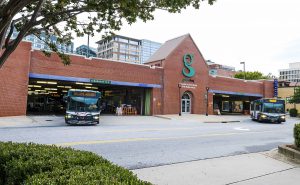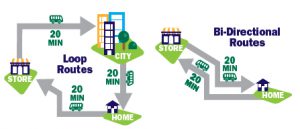The Piedmont Health Foundation and the Greenville Homeless Alliance announce a partnership to hire DeAndra Hillman as Housing Navigator. This new position and partnership includes a focus on chronic homelessness and health outcomes. Homelessness has been identified as a top concern in the two most recent Bon Secours Saint Francis and Prisma Health Community Health Needs Assessment. Additionally, data from the South Carolina Department of Revenue and Fiscal Affairs demonstrates the dramatic decrease of 92% in annual charges to healthcare and justice systems when long-term supportive housing is available for people experiencing chronic homelessness.
“We believe homelessness is solvable and this new partnership allows our organization to expand relationships with housing providers while we deepen support of dedicated frontline service providers working with those who desperately need housing,” said Greenville Homeless Alliance Director, Susan McLarty. “The financial and human capital from the Piedmont Health Foundation allows us to continue the work of igniting change and DeAndra Hillman will lead efforts to align resources and collectively create innovative solutions.”
DeAndra Hillman was born and raised in the Southernside community of Greenville, SC. She believes in the mission of the Greenville Homeless Alliance and looks forward to increasing the impact the organization will have on Greenville County.
“I am extremely excited about this new position. I am looking forward to growing partnerships with housing providers while bringing awareness to the community’s overall health. As Housing Navigator, my focus will be on connecting frontline service providers who work with people experiencing chronic homelessness to permanent housing options and documenting how the health of an individual is affected by living without adequate shelter.”
The Piedmont Health Foundation Executive Director Addy Matney said, “As a foundation focused on Greenville County, we focus our efforts on improving health in a broad way to create sustainable change by working on the root causes of community health issues. We are excited to align our mission work for the next three years with the Greenville Homeless Alliance and the Housing Navigator. We look forward to working together to connect people with stable housing and demonstrating that this connection improves overall health outcomes for individuals and our community.”
According to the World Health Organization, housing is the first pillar of health, with three of the five social determinants of health also linked to housing.
“Greenville has seen tremendous growth in population and median household income. The number of people at risk for and experiencing homelessness has also continued to grow,” said Brandon Cook, Chair of the Greenville Homeless Alliance Steering Committee and Health Care for the Homeless and Medical Respite Program Director for New Horizon Family Health Services, Inc. “Now more than ever the most vulnerable in our community are having to rely on strategic collaboration of frontline service providers. The Greenville Homeless Alliance Housing Navigator will be the bridge that connects the resources of the housing providers to frontline service providers.”

 – defined here as the ability to move with ease throughout the geography of our community – is supported by more than our personal cars. What types of vehicles can help make it easier to get to and from the places we want to go? What emerging fuels and technologies can be deployed? How does the way the community is built impact mobility?
– defined here as the ability to move with ease throughout the geography of our community – is supported by more than our personal cars. What types of vehicles can help make it easier to get to and from the places we want to go? What emerging fuels and technologies can be deployed? How does the way the community is built impact mobility? We know that Greenlink’s local and state revenues for transit fall far behind other peer communities in the Southeast. Because of this, Greenlink is using federal funds that are generally intended for capital expenses – such as replacement buses – to operate the system. This creates a double-whammy for Greenlink; the lack of capital dollars means they have not been able to purchase new vehicles or save money in a capital replacement fund. And the limited operational dollars mean the system is unable to expand to meet residents’ needs.
We know that Greenlink’s local and state revenues for transit fall far behind other peer communities in the Southeast. Because of this, Greenlink is using federal funds that are generally intended for capital expenses – such as replacement buses – to operate the system. This creates a double-whammy for Greenlink; the lack of capital dollars means they have not been able to purchase new vehicles or save money in a capital replacement fund. And the limited operational dollars mean the system is unable to expand to meet residents’ needs. 2017 was a year of significant progress at Greenlink, Greenville County’s public transit system. Thanks to the leadership of its staff and board members, Greenlink is making changes to be more responsive and rider-friendly in the near term and to anticipate growth and community needs in the future.
2017 was a year of significant progress at Greenlink, Greenville County’s public transit system. Thanks to the leadership of its staff and board members, Greenlink is making changes to be more responsive and rider-friendly in the near term and to anticipate growth and community needs in the future. The Piedmont Health Foundation is excited to bring you aboard Greenville’s public transit system, Greenlink. Catch one of Greenlink’s buses to the downtown Greenlink Transit Center for a one hour presentation about Greenlink’s operations, changes, and future. The whole experience takes about two hours when including the time spent traveling to and from the Transit Center on a Greenlink bus. Remember to bring $3.00 in exact change to buy your ticket to and from the Transit Center. Lunch will be provided.
The Piedmont Health Foundation is excited to bring you aboard Greenville’s public transit system, Greenlink. Catch one of Greenlink’s buses to the downtown Greenlink Transit Center for a one hour presentation about Greenlink’s operations, changes, and future. The whole experience takes about two hours when including the time spent traveling to and from the Transit Center on a Greenlink bus. Remember to bring $3.00 in exact change to buy your ticket to and from the Transit Center. Lunch will be provided. 